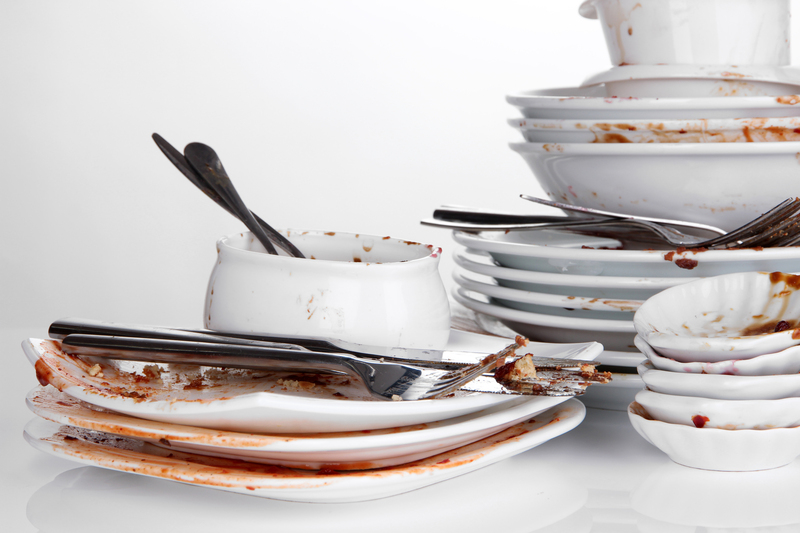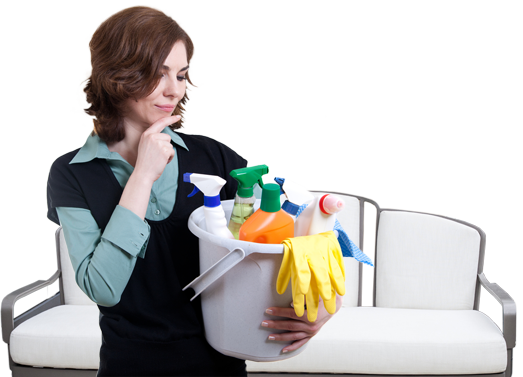Say Goodbye to Stovetop Residue with These Cleaning Hacks
Posted on 11/06/2025
Say Goodbye to Stovetop Residue with These Cleaning Hacks
If you love to cook, your stovetop undoubtedly puts in a lot of hard work. But with every delicious meal comes the inevitable: stubborn residue, nasty grease, baked-on spills, and mystery stains that just don't seem to budge. Sound familiar? It's time to transform your kitchen's centerpiece from grimy to gleaming. This comprehensive guide provides all the effective stovetop cleaning hacks you need to banish residue for good!
Why Is Stovetop Residue So Hard to Remove?
Stovetop residue isn't just an eyesore; it's a magnet for germs and can even interfere with cooking efficiency. Understanding the root of the problem is the first step to tackling it:
- Grease splatter from frying foods sticks to surfaces like glue.
- Caramelized sugars and burnt sauces can get welded onto the burners.
- Crumbs, dust, and food bits collect in hard-to-reach spots.
- Repeated heating and cooling bake residue into a tough, crusty layer.
Fortunately, with the right techniques and simple ingredients, you can conquer even the toughest stovetop grime!

Essential Supplies for a Sparkling Clean Stovetop
Before jumping into the cleaning action, gather these basic supplies. You'll likely have most of them at home:
- Baking soda
- White vinegar
- Lemon juice
- Dish soap
- Microfiber cloths or soft sponges
- Old toothbrush or scrub brush
- Spray bottle
- Plastic scraper (for glass or ceramic tops)
- Gloves (for sensitive skin)
Bonus tip: Always check your manufacturer's cleaning recommendations, especially for specialty finishes like induction or glass cooktops.
Quick and Simple Stovetop Cleaning Hacks
1. Daily Wipe-Down Ritual
Stop residue before it starts! After meals, let your stovetop cool and then wipe it down with a damp microfiber cloth and a drop of dish soap. This prevents minor spills from turning into major messes. For an extra shine, follow up with a dry cloth.
2. Baking Soda and Vinegar Power Duo
When gunk just won't budge, baking soda and white vinegar deliver impressive results:
- Sprinkle baking soda generously over burnt-on spots.
- Spray or drizzle white vinegar to activate the fizzing reaction.
- Let it bubble for 10-15 minutes. The fizz helps *loosen the residue*.
- Wipe away with a damp cloth or use a soft sponge for tougher residue.
- Finish with a clean, dry cloth for streak-free shine.
3. Lemon Juice for Shine and Scent
For a natural degreaser with a pleasant aroma, use fresh lemon juice:
- Cut a lemon in half and rub directly over greasy areas.
- Leave the juice on for 5 minutes.
- Wipe clean with a damp cloth.
4. Degrease With Dish Soap and Hot Water
Stubborn, greasy residue often needs a little extra persuasion. Mix a few drops of degreasing dish soap in hot water, soak a cloth, and lay it over the affected area for 10 minutes. This helps to soften stubborn grime for easy removal.
Deep Stovetop Residue Removal Hacks
5. Soak Removable Parts
Take off grates, burner caps, and knobs if your stove's design allows:
- Soak them in a sink filled with hot water and a squeeze of dish soap for 20-30 minutes.
- Use a scrub brush or old toothbrush to dislodge stuck particles.
- Rinse, dry thoroughly, and reassemble.
6. Magic Baking Soda Paste
For persistent, burnt-on debris, create a paste of baking soda and water:
- Mix 3 parts baking soda to 1 part water.
- Apply the paste to tough spots and let sit for 15 minutes.
- Scrub with a soft brush and wipe clean.
7. Glass and Ceramic Stovetop Cleaning
Special care for glass and ceramic surfaces prevents scratches:
- Spray with diluted white vinegar or glass cleaner.
- Wipe gently with a microfiber cloth.
- For stubborn residue, use a plastic scraper at a 45-degree angle to avoid scratching.
- Repeat as needed for sparkling results.
8. Steam Away Stuck-on Messes
Harness the natural power of steam:
- Boil a pot of water on the stove to let steam circulate around the burners and loosen residue.
- Once cool, wipe off softened spots with a damp cloth.
Pro tip: For electric coil stoves, always turn off power before cleaning or lifting elements.
Specialized Stovetop Cleaning Solutions
9. Commercial Stovetop Cleaners
If homemade remedies aren't enough, look for commercial stovetop cleaners specifically designed for your stove type. Always follow the manufacturer's directions and do a spot test first.
10. Natural Enzyme Cleaners
Natural enzyme-based sprays can break down organic residue safely and effectively. These are perfect for homes with kids and pets, as they're non-toxic and eco-friendly.
Preventing Stovetop Residue: Smart Kitchen Habits
- Wipe up spills as soon as the surface cools to prevent them from baking on.
- Use splatter guards when frying or simmering.
- Keep burner trays and liners (if your stove allows) to catch drips.
- Once a week, do a thorough clean to stop grime from accumulating.
- Don't forget hood filters! Clean them monthly to reduce greasy residue settling on your stove.
Myth-Busting: What NOT to Use When Cleaning Your Stovetop
Some cleaning hacks circulating online can do more harm than good. Here's what to avoid:
- Abrasive steel wool or rough scouring pads -- these can scratch glass and damaging coatings.
- Oven cleaners -- unless specified, these can discolor or harm stovetop surfaces.
- Highly acidic solutions (other than diluted vinegar or lemon) -- these may corrode certain metals.
- Flooding electronic controls -- moisture can cause electrical problems or corrosion.
The Easiest Maintenance Schedule for a Spotless Stovetop
- Daily: Quick wipe-down after each use with a soapy cloth.
- Weekly: Deep clean burners, grates, and knobs. Use baking soda and vinegar for stubborn spots.
- Monthly: Clean hood filters, check drip pans, and perform a more detailed inspection for hidden grime.
Frequently Asked Questions About Stovetop Cleaning
How can I get rid of burned-on residue without scratching my stovetop?
Always use soft cloths or sponges. Apply a baking soda paste and let it sit, or use a plastic scraper for glass surfaces. Avoid abrasive materials that scratch the surface.
Can I use vinegar on all types of stovetops?
While white vinegar is generally safe, avoid prolonged contact with cast iron or specialty metal finishes unless your manufacturer's guide approves it. Spot testing is always smart.
How do I clean my stove's control knobs?
Remove them if possible and soak in soapy water. For attached knobs, wipe with a damp soapy cloth and dry thoroughly to prevent moisture from getting into electrical components.
Extra Pro Tips for Ultimate Stovetop Cleanliness
- Use baking soda paste to remove stubborn residue on oven doors and backsplashes, too.
- Line drip pans with aluminum foil or fitted liners for easier cleanup (change regularly).
- Keep a spray bottle of diluted vinegar nearby to tackle daily splatters fast.
- Always dry thoroughly after cleaning to prevent streaks or rusting.

Conclusion: Enjoy a Gleaming, Residue-Free Stovetop
Bidding farewell to sticky stains and burned-on gunk is easier than ever with these stovetop cleaning hacks. A sparkling, residue-free stovetop not only makes your kitchen look better -- it's also healthier and more enjoyable to cook in! Remember, regular maintenance and quick action are your best friends in preventing build-up and keeping your cooking space spotless. With these expert-approved tips, you're equipped to say goodbye to stovetop residue once and for all. Happy cleaning!




